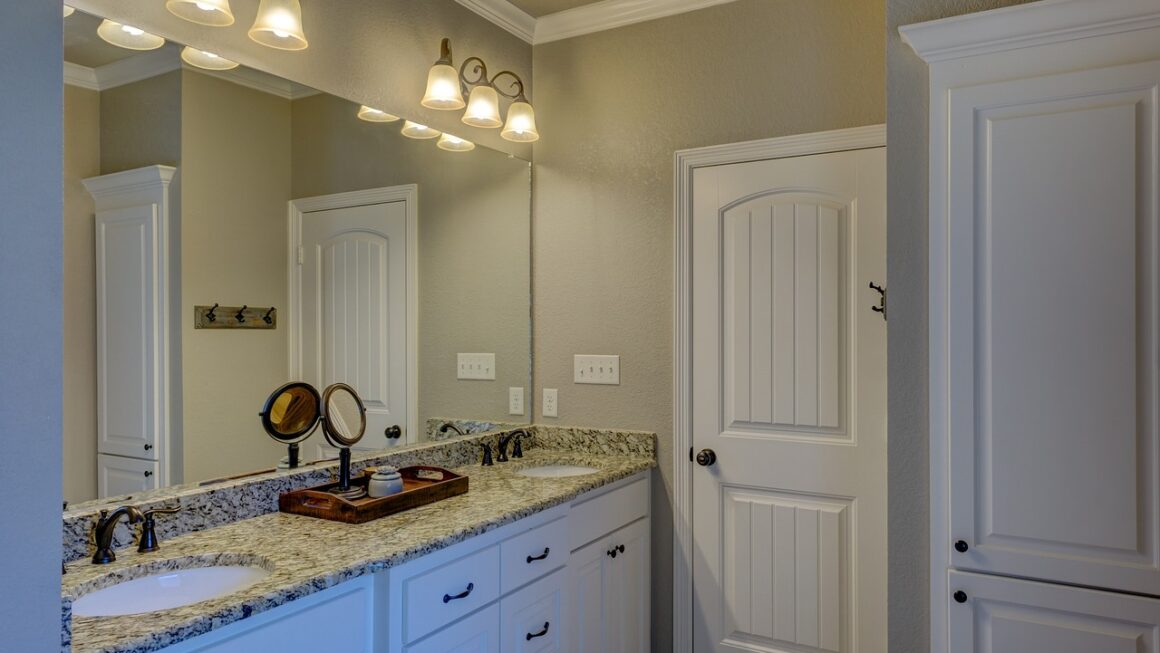The key to modern convenience often hangs right on our front door – or rather, doesn’t hang at all. Smart locks are revolutionizing home security, offering a blend of keyless entry, remote access, and enhanced control. No longer are we limited to traditional metal keys and the risk of them being lost or stolen. Instead, we’re embracing a future where unlocking your door is as simple as tapping a smartphone, speaking a voice command, or entering a code. This comprehensive guide dives deep into the world of smart locks, exploring their benefits, features, and how to choose the best one for your needs.
Understanding Smart Locks
What is a Smart Lock?
A smart lock is an electromechanical lock that allows you to lock and unlock your door using a smartphone, keypad, key fob, or even voice commands. They connect to your home’s Wi-Fi network (or Bluetooth) and often integrate with other smart home devices, providing a seamless and secure entry experience. Unlike traditional locks, smart locks offer advanced features such as activity logs, remote locking/unlocking, and temporary access codes.
How Smart Locks Work
Smart locks typically replace your existing deadbolt, utilizing a motorized bolt to secure or release the door. The lock communicates with a smartphone app, keypad, or other access device via Bluetooth or Wi-Fi. This allows you to:
- Unlock your door remotely: Grant access to family members, friends, or service providers from anywhere in the world.
- Create and manage access codes: Assign unique codes for different users and set time limits for their validity.
- Monitor activity: Track who is entering and exiting your home and when.
- Receive notifications: Get alerts when the door is locked or unlocked, or if there’s unauthorized activity.
Key Components of a Smart Lock System
Most smart lock systems consist of the following core components:
- Smart Lock Unit: This replaces your existing deadbolt and contains the motorized locking mechanism, along with the electronic components for communication and control.
- Smartphone App: This allows you to control the lock remotely, manage users, view activity logs, and configure settings.
- Wireless Connectivity: Smart locks connect to your home network via Wi-Fi or Bluetooth. Some models require a separate Wi-Fi bridge or hub for remote access.
- Power Source: Smart locks are typically powered by batteries, which need to be replaced periodically. Some models offer rechargeable options.
Benefits of Using a Smart Lock
Enhanced Security
Smart locks provide several security advantages over traditional locks:
- Keyless entry: Eliminates the risk of lost or stolen keys.
- Activity logs: Provides a record of who is entering and exiting your home, helping to deter unauthorized access.
- Tamper alerts: Some models can detect and alert you to attempts to tamper with the lock.
- Auto-locking: Automatically locks the door after a set period of time, ensuring your home is always secured.
Increased Convenience
Smart locks offer unparalleled convenience in several ways:
- Remote access: Unlock your door for guests or deliveries even when you’re not home.
- Keyless entry: No more fumbling for keys, especially when your hands are full.
- Temporary access codes: Grant temporary access to service providers or visitors without giving them a permanent key.
- Integration with smart home systems: Integrate with other smart home devices, such as security cameras and lighting, for a seamless security experience.
Improved Home Management
Smart locks contribute to better home management by providing:
- Simplified access control: Easily manage who has access to your home and when.
- Real-time monitoring: Stay informed about who is entering and exiting your home.
- Integration with other smart devices: Automate tasks such as turning on the lights or disarming the alarm system when you unlock the door.
- Peace of mind: Know that your home is secure, even when you’re away.
Choosing the Right Smart Lock
Compatibility
Before purchasing a smart lock, consider these compatibility factors:
- Door Type: Ensure the smart lock is compatible with your door type (e.g., single-cylinder deadbolt, mortise lock).
- Door Thickness: Check the lock’s specifications to ensure it fits the thickness of your door.
- Existing Hardware: Consider whether you want to replace your entire deadbolt or just the interior portion.
Features and Functionality
Different smart locks offer a variety of features. Consider what’s most important to you:
- Remote Access: Do you need the ability to unlock your door from anywhere?
- Keypad: Do you prefer a keypad for entering access codes?
- Voice Control: Do you want to control the lock with voice commands via Amazon Alexa or Google Assistant?
- Auto-Locking: Do you want the lock to automatically lock after a certain period?
- Activity Logging: Do you want to track who is entering and exiting your home?
- Integration with Smart Home Systems: Do you want the lock to integrate with other smart home devices?
Security and Reliability
Prioritize security and reliability when choosing a smart lock:
- Encryption: Look for locks that use strong encryption to protect your data.
- Physical Security: Choose a lock made from durable materials that can withstand tampering.
- Backup Key: Ensure the lock has a physical key as a backup in case of power outages or technical issues.
- Battery Life: Consider the battery life of the lock and whether it uses replaceable or rechargeable batteries. Read reviews to assess real-world battery performance.
Price and Budget
Smart locks range in price from around $100 to over $300. Set a budget and compare features across different models within your price range. Consider the long-term cost of ownership, including battery replacements and potential subscription fees for advanced features.
Installation and Setup
DIY Installation vs. Professional Installation
Most smart locks are designed for DIY installation, but some may require professional installation, especially if you’re not comfortable with basic home improvement tasks.
- DIY Installation: If you’re comfortable with using tools and following instructions, you can typically install a smart lock yourself.
- Professional Installation: If you’re not confident in your abilities, or if you have a complex door setup, consider hiring a professional installer.
Step-by-Step Installation Guide (General)
While the exact steps vary depending on the specific model, here’s a general overview of the smart lock installation process:
Tips for a Smooth Installation
- Read the instructions carefully: Before starting the installation process, read the instructions thoroughly.
- Gather your tools: Make sure you have all the necessary tools before you begin, such as a screwdriver, drill, and tape measure.
- Take your time: Don’t rush the installation process. Take your time and follow the instructions carefully.
- Test the lock thoroughly: After you’ve installed the lock, test it thoroughly to ensure it’s working properly.
Maintaining Your Smart Lock
Battery Replacement
Smart locks typically use batteries to power their operations. The frequency of battery replacement depends on the lock model, usage, and battery type. Monitor the battery level in the app and replace batteries when they are low to avoid being locked out. Consider using high-quality lithium batteries for longer life.
Software Updates
Manufacturers regularly release software updates to improve security, add new features, and fix bugs. Make sure to keep your smart lock’s software up to date to ensure optimal performance and security. The smart lock app will usually notify you when an update is available.
Troubleshooting Common Issues
- Lock Not Responding: Check the batteries and ensure they are properly installed. If the batteries are good, try restarting the lock.
- Connectivity Issues: Ensure your Wi-Fi network is working properly and that the smart lock is within range of the router. Try restarting your router.
- App Issues: Ensure that you have the latest version of the smart lock app installed on your smartphone. Try clearing the app cache or reinstalling the app.
Conclusion
Smart locks offer a powerful combination of security, convenience, and control, making them a valuable addition to any smart home. By understanding the different types of smart locks, their features, and installation process, you can choose the right lock for your needs and enjoy the benefits of keyless entry, remote access, and enhanced security. As technology continues to advance, smart locks are poised to become an even more integral part of our lives, simplifying our routines and providing peace of mind. So, take the leap and unlock a smarter, more secure future for your home.




